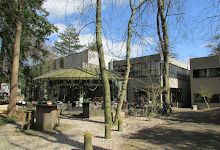Archive number: 109 [u]
Title: Holy Graal
Main Album: Unreleased
Track number: 2
Genre: Mediaeval
Studio: Bolinha Studio
Length: 02' 28”
Composer: Jan Dumee, Thijs van Leer
Musicians: Thijs van Leer – Flutes; Jan Dumee – Vocals, acoustic Guitars, Drum, Tambourine
Producer: Thijs van Leer
Engineer: Unknown
Label: None
Date of recording/release: This track was recorded in 2006 at the start of preparations for the album Focus 9 – after the departure of Bert Smaak but before the departure of Jan Dumee. It has been made available on Jan Dumee's website.
Alternative version: None
Note: We begin with a slow percussion backed flute section (00:00-00:21). The vocal, backed by guitar and some flute begins at 00:22 and ends at 01:57. At 01:04-01:15 a short choir-like non-verbal section comes in backed only by guitar, the flute returning at 01:44. The final instrumental section features guitar, flute and percussion (01:58-02:28). The words appear to be in Old French or something similar.
Note on Holy Graal (From Wikipedia)
The word graal, as it is earliest spelled, appears to be an Old French adaptation of the Latin gradalis or gradale, meaning 'by degree', 'by stages', applied to a dish brought to the table in different stages or services during a meal. After the cycle of Grail romances was well established, late medieval writers came up with a false etymology for sangréal, an alternative name for "Holy Grail." In Old French, san graal or san gréal means "Holy Grail" and sang réal means "royal blood"; later writers played on this pun. Since then, "Sangreal" is sometimes employed to lend a medievalising air in referring to the Holy Grail. This connection with royal blood bore fruit in a modern bestseller linking many historical conspiracy theories.
The Holy Grail is a sacred object figuring in literature and in certain Christian traditions, most often identified with the dish, plate, or cup used by Jesus at the Last Supper and said to possess miraculous powers. The connection of Jospeh of Arimathea with the Grail legend dates from Robert de Boron's Joseph d'Arimathie (late 12th century) in which Joseph receives the Grail from an apparition of Jesus and sends it with his followers to Great Britain. Building on this theme, later writers recounted how Joseph used the Grail to catch Christ's blood while interring him and that in Britain he founded a line of guardians to keep it safe. The quest for the Holy Grail makes up an important segment of the Arthurian cycle, appearing first in works by Chrétien de Troyes. The legend may combine Christian lore with a Celtic myth of a cauldron endowed with special powers.
The development of the Grail legend has been traced in detail by cultural historians: It is a legend which first came together in the form of written romances, deriving perhaps from some pre-Christian folklore hints, in the later 12th and early 13th centuries. The early Grail romances centered on Percival and were woven into the more general Arthurian fabric. Some of the Grail legend is interwoven with legends of the Holy Chalice.
The Grail plays a different role everywhere it appears, but in most versions of the legend the hero must prove himself worthy to be in its presence. In the early tales, Percival's immaturity prevents him fulfilling his destiny when he first encounters the Grail, and he must grow spiritually and mentally before he can locate it again. In later tellings the Grail is a symbol of God's grace, available to all but only fully realised by those who prepare themselves spiritually, like the saintly Galahad.
There are two veins of thought concerning the Grail's origin. The first, holds that it derived from early Celtic myth and folklore. Meanwhile, other scholars believe it began as a purely Christian symbol. Another recent theory holds that the earliest stories casting the Grail in a Christian light were meant to promote the Roman Mass. It was around the time of the appearance of the first Christianised Grail literature that the Roman church was beginning to add more ceremony and mysticism to this particular sacrament. This theory has some basis in the fact that the Grail legends are a phenomenon of the Western church.
Most scholars today accept that both Christian and Celtic traditions contributed to the legend's development, though many of the early Celtic-based arguments are largely discredited. The general view is that the central theme of the Grail is Christian, even when not explicitly religious, but that much of the setting and imagery of the early romances is drawn from Celtic material.
The Grail is first featured in Perceval, le Contedu Graal (The Story of the Grail) by Chrétien de Troyes, who claims he was working from a source book given to him by his patron, Count Philip of Flanders. In this incomplete poem (from some time between 1180 and 1191), the object has not yet acquired the implications of holiness it would have in later works. Though the earliest and most influential account, it was in the work of Robert de Boron that the Grail truly became "Holy" and assumed the form most familiar to modern readers - in the verse romance Joseph d’Arimathie (composed between 1191 and 1202).


 As mentioned, the boy who really got me into Focus all those years ago was called Robert Hogg. I found this and the other one looking for something the other day. We all agreed that he gets Akkerman better than van Leer. On reflection, I may have only paid 50p or 60p for the pair (both are on one large sheet of drawing room paper). Scandalously cheap. Thanks again!
As mentioned, the boy who really got me into Focus all those years ago was called Robert Hogg. I found this and the other one looking for something the other day. We all agreed that he gets Akkerman better than van Leer. On reflection, I may have only paid 50p or 60p for the pair (both are on one large sheet of drawing room paper). Scandalously cheap. Thanks again!




















